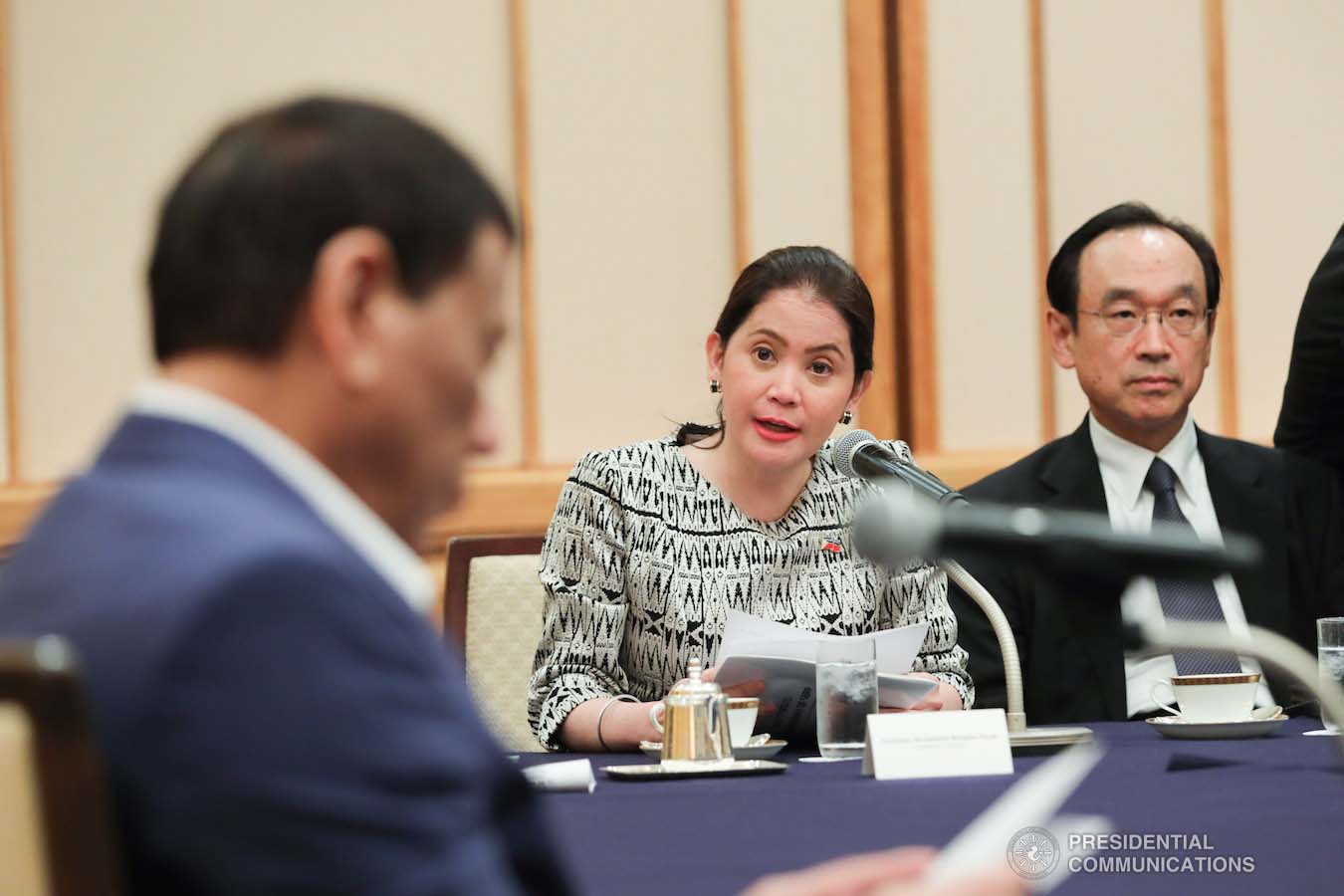Headline
Duterte may visit Boracay if accompanied by DOT chief

FILE: President Rodrigo Roa Duterte listens to Tourism Secretary Bernadette Romulo-Puyat as she discusses the accomplishments, plans, and programs of the Department of Tourism during the meeting with the Japanese tourism partners at the Imperial Hotel in Tokyo, Japan on May 29, 2019. ROBINSON NIÑAL JR./PRESIDENTIAL PHOTO
MANILA — President Rodrigo Duterte on late Monday night said he is willing to visit Boracay to promote local tourism amid the coronavirus disease 2019 (Covid-19) threat as long as he is accompanied by Tourism Secretary Bernadette Romulo-Puyat.
In a press briefing after a meeting with members of the Inter-Agency Task Force on the Management of Emerging Infectious Diseases, Duterte said he wanted Puyat to go swimming with him in one of the country’s top tourist destinations.
“Yes, kasi wala ng tao. Ito kasing si Berna eh. Wala na magpunta. Sabi ko, ‘Sige, magpunta ako pero maligo tayo’ (Yes, [I’m going] because there are barely any tourists there. Berna says very few are visiting the island. So I said, ‘Okay, I’ll go but we should go swimming),” he said.
He admitted that he has never been to Boracay, and wanted to have “something to look at”.
“If you look at the open sea, it’s endless. Mabubulag ka (You’ll be blinded). But Berna would sit beside me on a sunset, I will stay. Totoo, hindi pa ako nakapunta ng Boracay (It’s true, I haven’t been to Boracay),” he said.
Last week, Puyat confirmed that Duterte will be visiting Boracay on March 12 to join efforts in lifting the public’s mood to travel around the Philippines.
Aside from promotions, he will also inspect what has been done on the island since it was rehabilitated.
Meanwhile, Duterte reiterated his vow to give Boracay back to its original settlers.
“I gave it to the natives. Then further inside the island, pina…Sabi ko, ‘Ubusin mo. Ubusin mo ang bara — Boracay sa mga natives. Ibigay mo sa kanila kasi lupa nila ‘yan’ (I told them, ‘Finish it, finish it—Boracay belongs to the natives. Give it to them because that land is theirs),” he said.
In November 2018, Duterte led the initial distribution of six Certificates of Land Ownership Awards to 44 members of Aklan’s indigenous people. The new IP landowners received a total of 3.2064 hectares of agricultural land.
He also took pride in the Boracay Island being restored “close to its original pristine” beauty after a six-month major rehabilitation from April to October 2018.
Covid-19 protocols
Earlier, Tourism Undersecretary Benito Bengzon Jr. said the Department of Tourism (DOT) would be allocating approximately PHP6 billion that will span international and domestic promotions, infrastructures and regional tourism development.
From this budget, DOT will allocate approximately PHP85 million for training for Covid-19 orientation, preparedness, response and protocols for industry stakeholders.
“Our manpower development office will tweak our Filipino brand of service to include points on how to handle guest for Covid-19 and response. This will include integration of DOH (Department of Health) guidelines in all training to be conducted moving forward,” he said.
He said the DOT has also cascaded the proper guidelines for accommodation establishments on how to deal with guests in light of Covid–19.
These protocols include the use of infrared thermometers to check one’s temperature, screening guidelines, and provision of hand sanitizers, he said.
He said the DOT will also be providing regular updates through a recently created website www.philippines.travels/safeph – which will serve as a splash page both to corporate and marketing websites.
He assured that the DOT would work hand in hand with the DOH and the Department of the Interior and Local Government to craft a joint memorandum circular to establish protocols in reporting security and health measures in light of the crisis.
Aside from these safety precautions, the DOT sought the support of the country’s carriers, such as Philippine Airlines, Cebu Pacific, Air Asia to roll out discounted flights around the country to propel domestic tourism.
Given the reduction in international flights, he said the vacant airport slots are being offered to local carriers to increase domestic flights.
DOT-accredited hotels and resorts will be lowering their prices anywhere from 30 percent to 70 percent off the published and online rates in order to be more competitive with neighboring South East Asian countries.





















